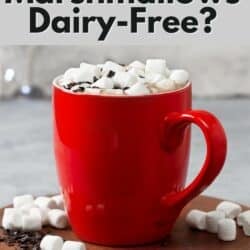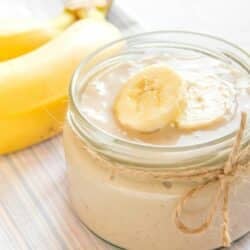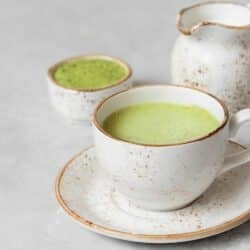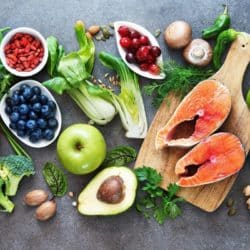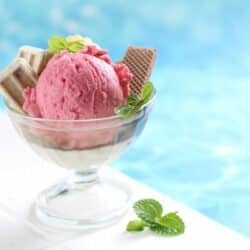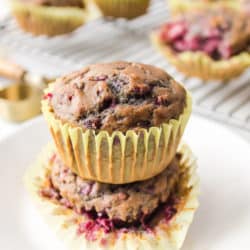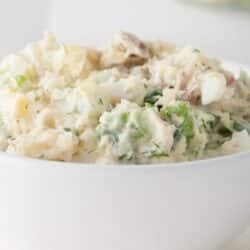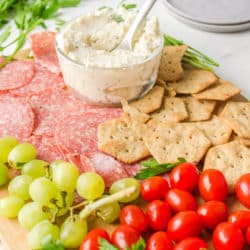Are Marshmallows Dairy-Free?
Marshmallows are a delicious treat that can be eaten alone or as part of a dessert recipe. But are marshmallows appropriate for dairy-free diets? Let’s see what ingredients are in marshmallows and whether those who are dairy-free or lactose intolerant can eat these tasty treats.
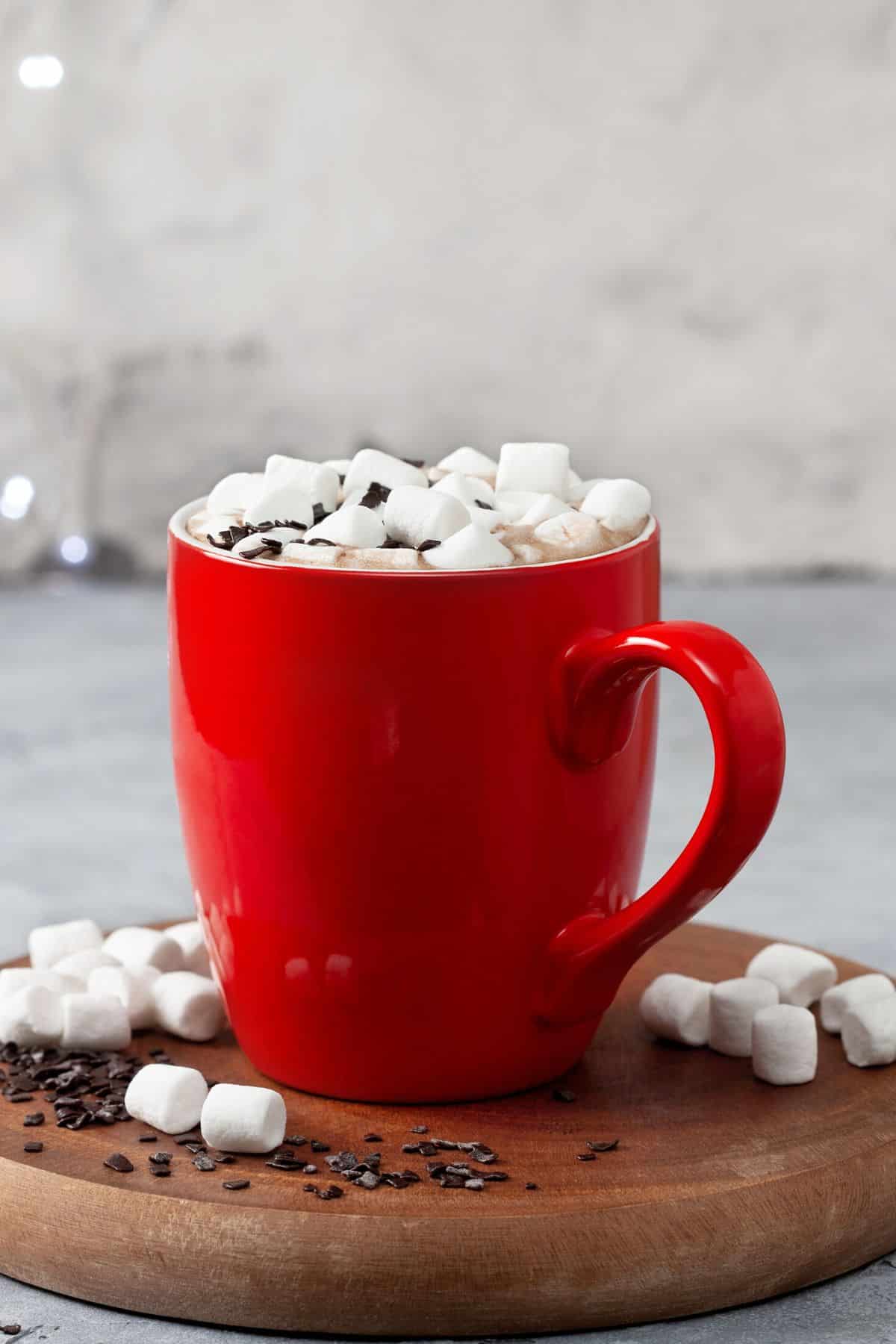
Marshmallows – What Are They?
Marshmallows are puffy, pillowy sweet treats that usually have a hint of vanilla in the flavor. What makes marshmallows special is their soft, squishy texture. They’re also incredibly versatile! You can have marshmallows as they are or use them in various recipes.
Toasting marshmallows over a campfire is one of the most popular ways to enjoy them. When the sugar gets hot enough, it begins to break down into smaller molecules that react with one another.
These reactions change the marshmallow’s flavor and texture. It becomes a bit crispy on the outside and extra gooey on the inside. The heat also adds nutty, fruity, buttery flavors and aromas.
Sandwich the toasted marshmallow with a piece of dairy-free chocolate between two halves of a graham cracker, and you’ve made a s’more. If you’ve ever had one, you’ll know these yummy treats are addictive!
You can also use marshmallows to make Rice Krispie treats, on top of sweet potato casserole, on top of ice cream, or as a decadent filling in loaded baked apples. There are tons of delicious ways you can use this sweet treat.
One of my favorite ways to enjoy them is in my Healthy Hot Chocolate recipe. It’s a super satisfying, gooey taste sensation, especially on a cold day!
Fun Facts
Did you know that Ligonier, Indiana is the marshmallow capital of the world? Marshmallow production is one of the biggest industries in the area, and they have an annual marshmallow festival.
Here are some other fun facts about marshmallows:
- Americans buy over 90 million pounds of marshmallows every year.
- Marshmallows originally came from Egypt around 2000 BC.
- The French began producing marshmallows in the early to mid-1800s.
- Marshmallows were medicine in the 1800s! Doctors mixed marshmallow sap with sugar and egg whites to make meringues used for coughs, sore throats, and wounds.
- August 30th every year is National Toasted Marshmallow Day in America.
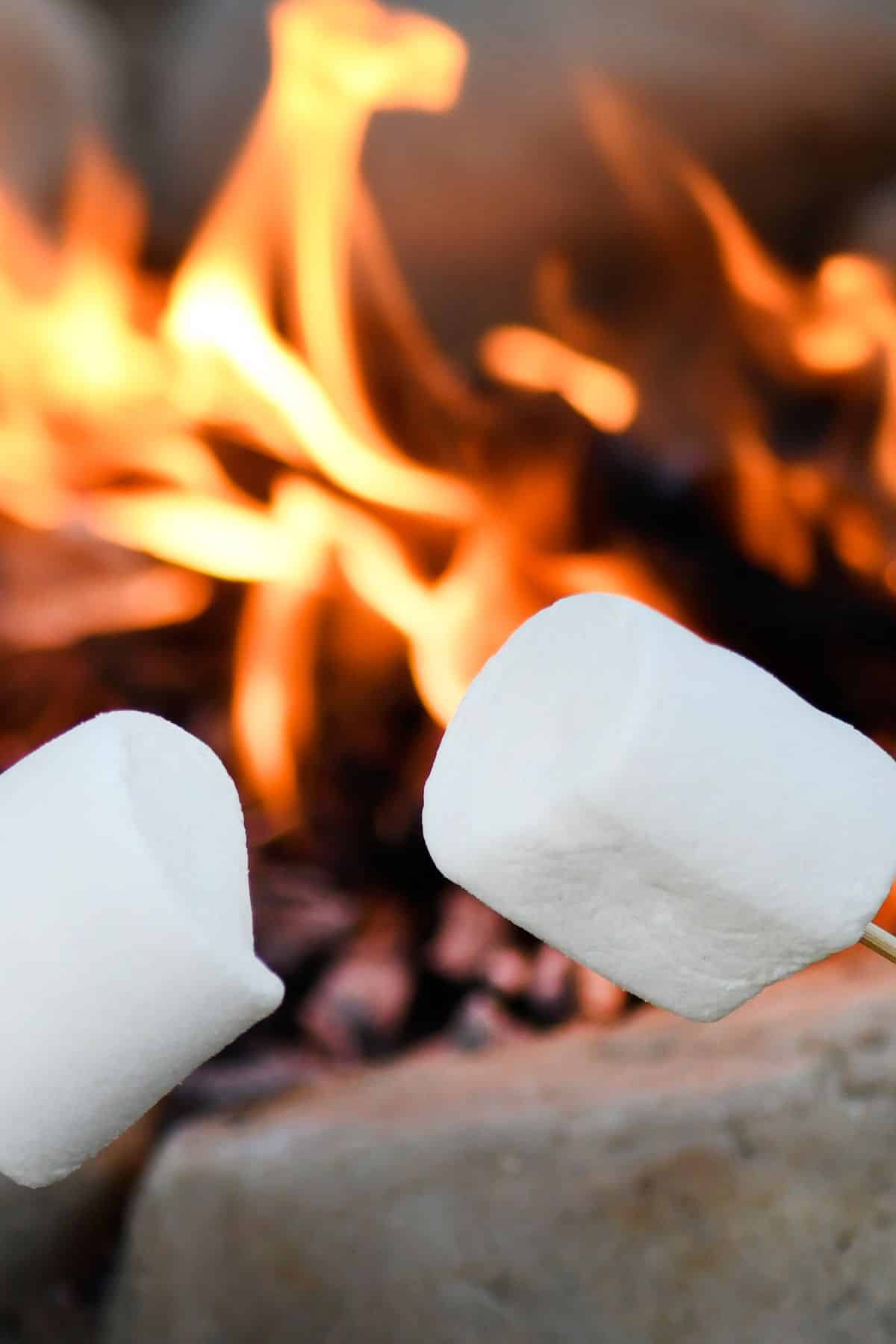
What Are Marshmallows Made Of?
Originally, marshmallows were made from the mallow plant (Athaea Officinalis) that grows wild in marshes. Ancient Egyptians would squeeze the sap out and mix it with honey and nuts. It was a special treat reserved for royalty and gods.
For the traditional marshmallow that we know now, French candy-makers whipped the mallow sap and other ingredients into a fluffy mold. It took a lot of effort, which made marshmallows a delicacy. We’re lucky that marshmallows are available in most grocery stores these days.
Since marshmallows in grocery stores are manufactured, each company will have its own recipe. Most marshmallows contain a sweetener like cane sugar, dextrose, tapioca syrup, or corn syrup, as well as gelatin and a stabilizer like corn starch or tapioca starch. They also contain whipping aids like tetrasodium pyrophosphate and natural or artificial flavoring.
There’s a marshmallow product called marshmallow creme or fluff. It has a thinner texture and is used to spread or scoop. Instead of gelatin, marshmallow creme usually contains egg white and cream of tartar as the main ingredients.
As you can see, marshmallows and marshmallow products don’t usually contain dairy, but some of the ingredients are not exactly healthy.
Does that mean you’ll have to avoid marshmallows to eat healthfully? Not exactly. Thankfully, there are different brands of marshmallows, and some are healthier than others. Let’s explore these.
See my related article on the benefits of a dairy-free diet.
Popular Brands Of Marshmallows (Dairy-Free Options)
Yes, most brands of marshmallows are dairy-free, and they’re not hard to find at most grocery stores. Look for them in the baking aisle of your grocery store or use the links below to shop online.
Always be sure to check the ingredients list for dairy ingredients or contamination risks. Stay away from artificial flavors and preservatives.
Here are some of the most popular marshmallow brands in the United States.
Dandies
Dandies marshmallows are not only dairy-free but also gluten-free, and, according to their website, they have no artificial colors, corn syrup, or gelatin. And, because they don’t contain gelatin or other animal products, they’re vegan!
There are other brands with vegan options, but Dandies are known for being the best.
Campfire
Besides being dairy-free, Campfire marshmallows are gluten-free, free from the top eight allergens, and have no artificial colors.
Hammonds
Hammonds are dairy-free, gluten-free, and GMO-free. They come in various flavors and are handcrafted in the U.S.
Kraft Jet Puffed Marshmallows
Although this is one of the top-selling gluten- and dairy-free brands, these Kraft Jet Puffed Marshmallows come with a “may contain” warning, as many other brands do. And some of the ingredients are not exactly healthy.
Smashmallows
These tasty treats are gluten-free, non-GMO, and free from corn syrup and preservatives. Smashmallows are also kosher-certified and contain only natural colors and flavoring. You can choose from various fancy flavors, and some are even dipped!
Peeps Marshmallows
Most of the flavors of Peeps are gluten-free, and all of them are dairy-free. Just check the packaging to be sure, especially with new seasonal and specialty flavors.
Stuffed Puffs
These marshmallows are not dairy-free and not gluten-free. Most contain dairy, wheat, and soy, so they’re unsuitable for people with dairy, wheat, and gluten allergies and intolerances.
It’s important to note that even though most of these brands are dairy-free and gluten-free, there is always a risk of contamination if the marshmallows are manufactured in the same factory as products containing dairy or gluten. However, most of these store-bought marshmallows are safe to eat if you’re dairy-free.
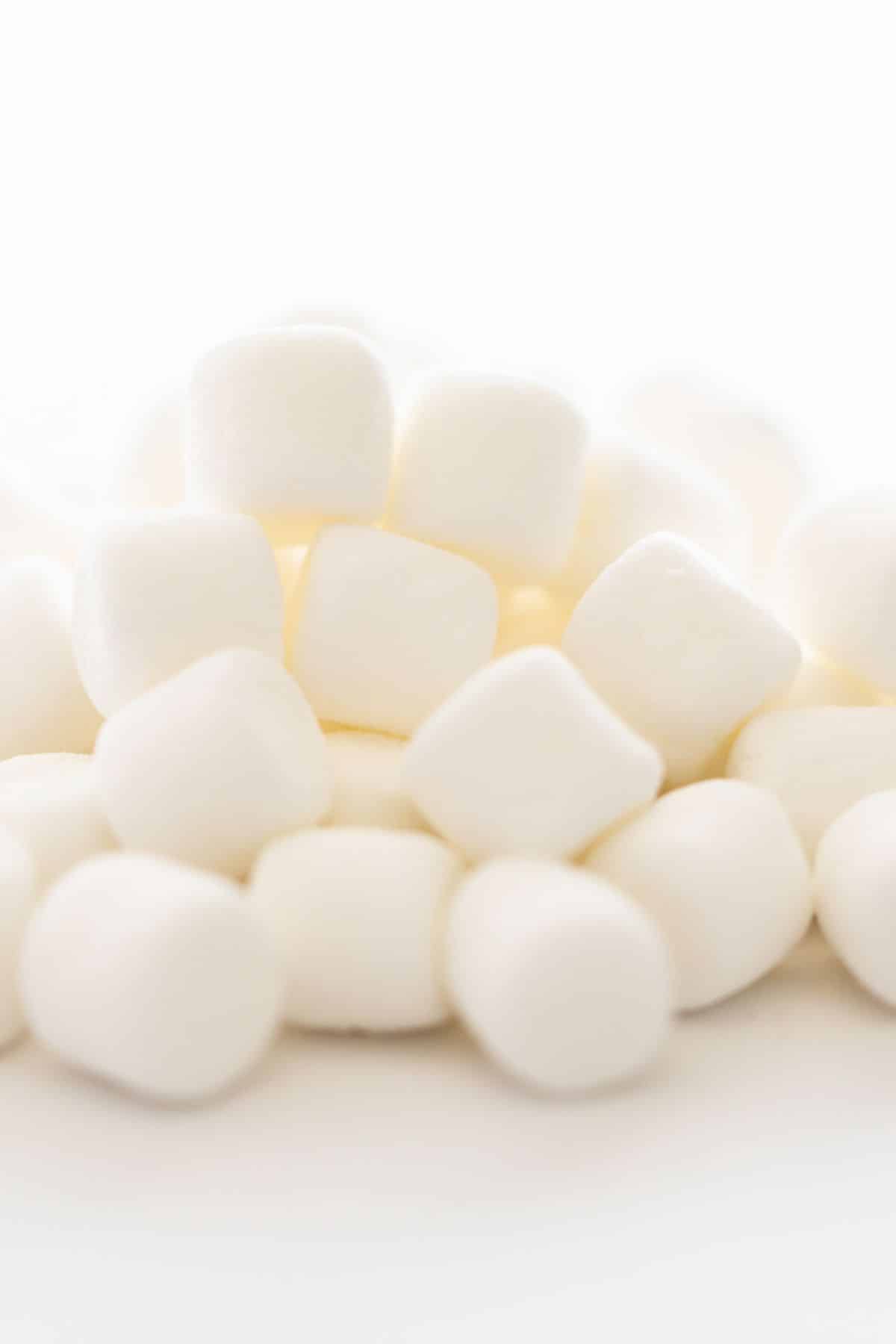
FAQs
We’ve included answers to some of the most common questions about marshmallows.
Most commercially-made marshmallows are gluten-free, even if they’re not labeled or certified as such. The basic ingredients are all gluten-free. However, some of the flavorings may contain gluten, so it’s essential to read the packaging and ingredient list to note all the ingredients.
If you have celiac disease, a wheat or gluten allergy, or intolerance, watch out for ingredients like wheat starch, glucose syrup derived from wheat, or malt syrup. If you’re unsure of any ingredients, it’s best to choose a brand that only contains ingredients you’re sure are okay for you to eat. The fewer ingredients a product has, the better it will likely be for you anyway.
No, most marshmallows are not vegan. They contain gelatin, a common ingredient derived from the connective tissues of animals. But don’t despair if you are vegan and love marshmallows. Some brands produce vegan marshmallows like Dandies. They use soy protein in place of gelatin.
If you have a soy allergy and you’re vegan, you could try making homemade vegan marshmallows; many recipes are available online. Instead of the gelatin or soy protein, these recipes use aquafaba, the water found in canned garbanzo beans, and agar agar powder, vegan gelatin made from seaweed. Aquafaba whips up similar to egg white, and agar agar keeps everything in place and gives vegan marshmallows their stretchy texture. These vegan substitutes generally work as well as the original ingredients.
Yes, it is! Marshmallow fluff may look creamy and milky, but it contains no dairy products. It does, however, usually contain egg whites, so it’s not vegan.
Yes, you can! There are so many recipes for homemade marshmallows available, and it’s the best way to ensure you use ingredients that are as clean and healthy as possible. it’s always best to make your own if you have serious food allergies.
More Dairy-Free Resources
Conclusions
If you’re dairy-free and love marshmallows, you’re in for a treat! You can still enjoy most store-bought brands as they come or use them in recipes. Most marshmallow brands are dairy-free and gluten-free.
Don’t forget to read the ingredients and ensure there aren’t any hidden names of the foods you’re avoiding, especially if you have a food allergy or intolerance. Watch out for filled and dipped marshmallows because the filling or coating could contain dairy, even if the marshmallows don’t. And, remember to make your s’mores with dairy-free chocolate.
Don’t forget to join my newsletter list to get exclusive clean eating recipes and tips. The newsletter is 100% free with no spam; unsubscribe anytime.


